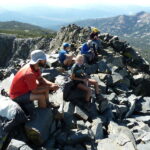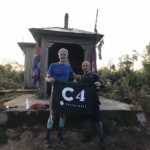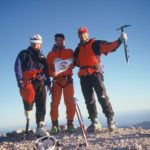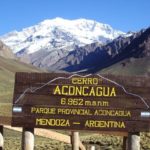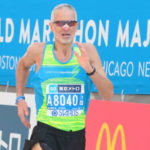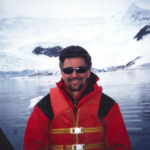

TRIP REPORT #2: KILIMANJARO THE ZALOKAR ROUTE
I had always wanted to go to Kilimanjaro, but I couldn’t find anyone to go with me. Eventually, I decided to go solo. I booked round trip air on Air France from LA to Kilimanjaro International Airport, which is between the towns of Moshi and Arusha. I arrived on the 16th of January 1993 and found a ride to the Marangu Gate of the Kilimanjaro National Park.
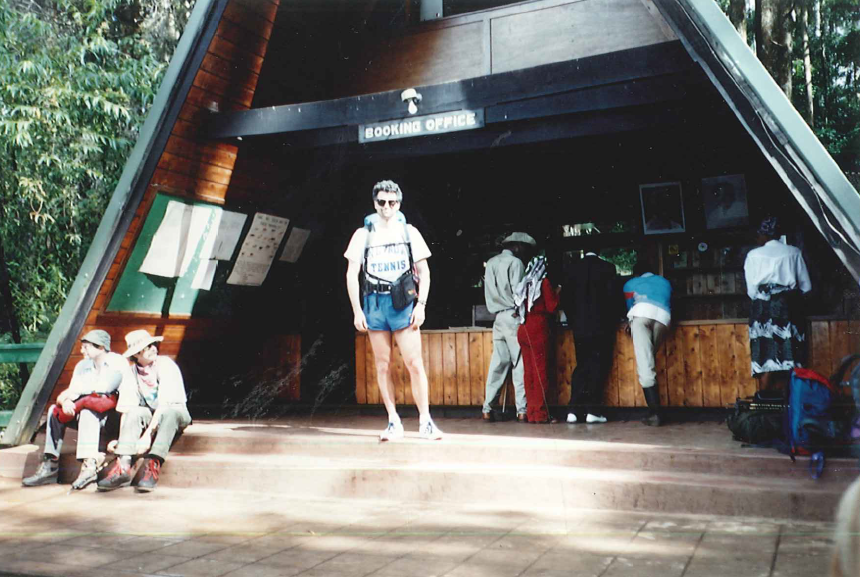
Starting the next day, I arranged a 5-day climb that cost $358. The cost of the climb included a guide named Obre, a porter, use of the huts on the mountain if space was available, and food for 5 days. The route we were taking was the only route up Kilimanjaro with huts along the way. Each camp had huts with bunks for the climbers, separate huts for the porters and guides, and other ones for cooking, eating, and bathrooms.
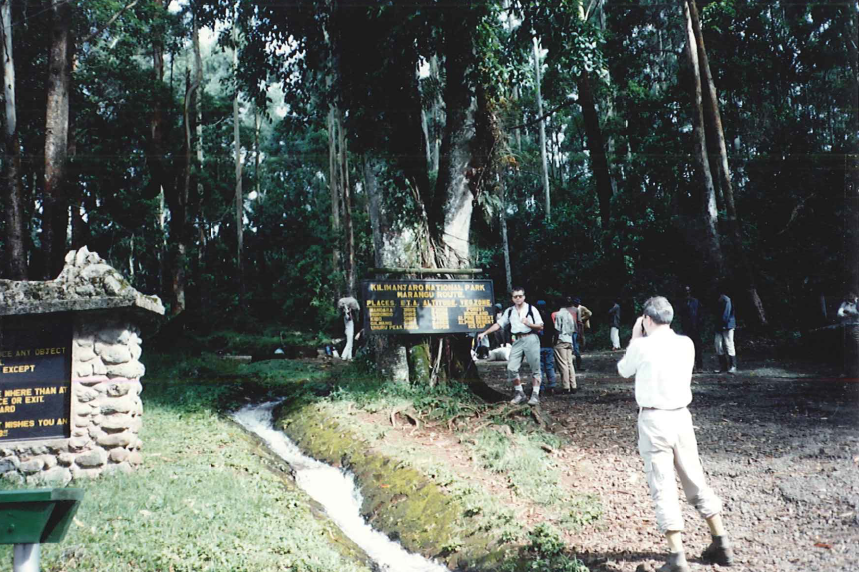
It rained hard the night before our climb began, but in the morning the weather looked much better. After breakfast, I met with Obre and the porter. We went to the gate and checked into the National Park. We found out that there were no bunks left in the lower huts on the mountain, so Obre went and got a tent for me. I decided that I would carry all of my own stuff, even though we had a porter with us. I liked to carry all of my gear, in order to be self-sufficient. If, for some reason, the porter didn’t make it to the hut, I wanted to have everything I might need with me.
We started the hike to the Mandara Hut, which is at an altitude 2700m. Halfway there, it started pouring rain. The rainforest became a mudforest. There were mud puddles everywhere, some of them 6 inches deep. I tried to walk through the bushes on the sides of the trail more than the trail itself to keep myself from sliding. The only animals I saw along the trail were monkeys in the trees. Even in the rain, it took us only two and a half hours to reach the first hut. Normally I would have wanted to continue, but Obre wanted to stop and it was pouring, so I agreed. I hung out at the main hut for the rest of the afternoon. The porter took my wet clothes to the cooking hut and dried them by the fire. My clothes would smell like the fire for a long time afterwards. To this day, when I smell the smoke of a fire, I remember remote places I’ve been, and Africa is always among them.
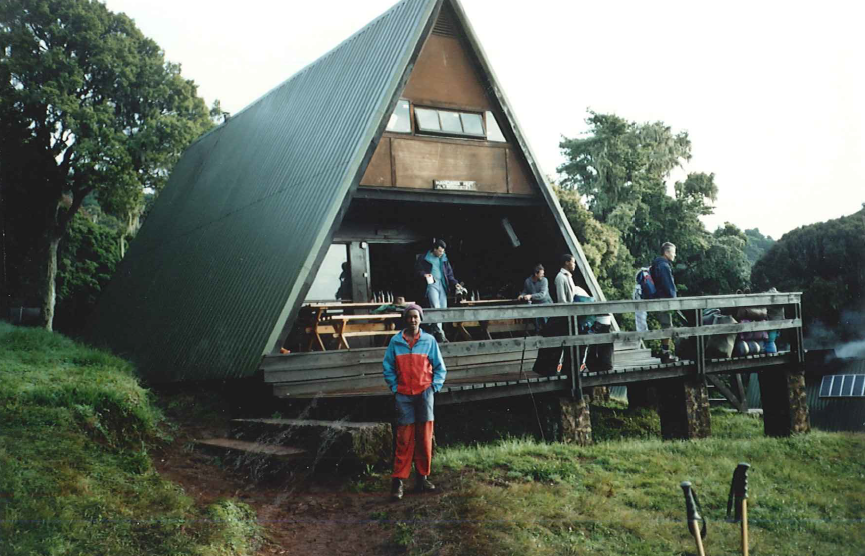
I had dinner around 6:00. The food was good, much better than if I had been carrying it and preparing it myself. I went to the tent, but it was leaking and very wet inside. It didn’t take much deliberating for me to decide that I wasn’t going to spend the night in the leaky tent. I went back to the main hut and met an Austrian woman who lent me a spare sleeping pad. When the first dinner table was empty for the night, I laid out my sleeping pad on it and went to sleep. About two hours later, I woke up again, and there were still a few folks drinking and partying. A woman told me there was an empty bunk up on the second floor, and I ended up sleeping the rest of the night there.

The next morning, the weather had cleared and it looked like it was going to be a nice day. I could see the mountain’s white top for the first time. Since it was not raining, I decided to go all the way to the top hut, Kibo, which is situated at 4700m. Obre didn’t like the idea, but because I was carrying all of my own things, there wasn’t much he could do to stop me. I hiked and ran up by myself.
After I passed the Horombo Hut at 3700m, it started snowing. When I got to Kibo, there were 3 inches of snow on the ground. Obre and the porter arrived more than two hours later. After dinner, we agreed we would leave at 1:00 AM for the summit. I went to sleep at 7:30, but was woken only two hours later. Obre had altitude sickness. He needed to go down the mountain. I got dressed and went over to the guides’ hut. Obre was strapped in a metal gurney with what appeared to be a bicycle tire in the middle and two men at each end to balance and navigate. I said goodbye and they took Obre down the mountain. The night they took Obre off the mountain was pretty chaotic in the camp. I don’t think too many locals descend the mountain on a gurney.
The porter then became a hybrid porter-guide; he said he would go to the summit with me at 1:00 AM. He woke me up at 12:30 AM, but the weather was bad. There were only 15 climbers at Kibo, because everyone was at the lower huts waiting for the weather to improve. We left that morning with the hope that the weather would improve.
It didn’t. It got worse.
We struggled all the way to the Hans Meyer Cave, a famous landmark at 5150m. I was exhausted and frozen. It would have been better if I’d had the kind of gear that I would have used on a winter climb. We were caught in a white-out blizzard. I called “uncle” and we went back down to the hut. It wasn’t safe for us to continue.
We had a hard time finding Kibo. In the snow, we had no tracks or path to follow. We had to wait for breaks in the snow when we could catch a glimpse of the hut and then aimed ourselves toward it, walking until the next glimpse would help us to reorient ourselves. We finally found it, and by the time we got back we were both exhausted and frozen solid.
I was beginning to realize that the snow on the mountain was at its deepest in more than twenty years. I was then told that no one would be allowed to go to Uhuru Peak (the summit, at 5963m) because there was too much snow. This was the 2nd mountain in a row (Mt. Elbrus being the first) where I was told I wasn’t allowed to go to the summit. I am pretty sure that most of the guides (and some of the climbers) simply didn’t want to deal with the snow. The guides were taking climbers to a lower peak on the mountain, Gillman’s Point at 5680m, and calling that the top. This was just another hurdle I’d have to deal with later. The current hurdle was that I had taken a gamble and raced up the mountain. I was starting to get sick from the altitude and was exhausted. If the weather conditions had been favorable, I probably would have tagged the summit and gotten down fast, but conditions were bad and I was paying the price. I needed to go down to a lower altitude and regroup.
When we got back to Kibo, I took a three-hour nap. At 10:00 AM, we started down the mountain. I think my porter-guide was happy. He thought we were going down for good. I was extremely sick, with diarrhea and a host of other nasty symptoms. We were back at the Manadara Hut (2700m) at 5:00 PM. After dinner, I found a bunk and tried to go to sleep. I felt like the walking dead—up all night going to the bathroom in the cold, pouring rain.
When I woke up at 6:30 AM, I was feeling a little better, but not much. After breakfast, I decided I was going back up the mountain. When I told my porter-guide, he was in utter disbelief. He told me he would have to “get this approved”. He disappeared and reappeared with a park ranger named Roman, who told me that it would cost me $170 to go back up. He figured it would take days extra. I thought this was complete BS, but promptly paid the money. This time I was going to stay at the Horombo Hut, at 3700m. It took four and a half hours to get to the hut. The rain was in full force. It was not a ton of fun. I found a bunk and went to sleep at 3:00 PM. I was woken at 6:00 PM for dinner, ate as much as I could and, went back to bed. It was a rough night.

When I woke up at 7:00AM, I felt better than the day before, but still not great. After breakfast, we left for the Kibo Hut together. It took us three hours. No rain or snow, and the really good news was that I was feeling stronger. When we arrived, I took a three-hour nap. It was snowing a little by then. The hut was full this time. In my bunk area, there was a big group of a couple dozen Swiss climbers. They were very nice and well equipped with radios and fancy climbing gear. Everyone’s plan was to leave at 1:00 AM again for the summit.
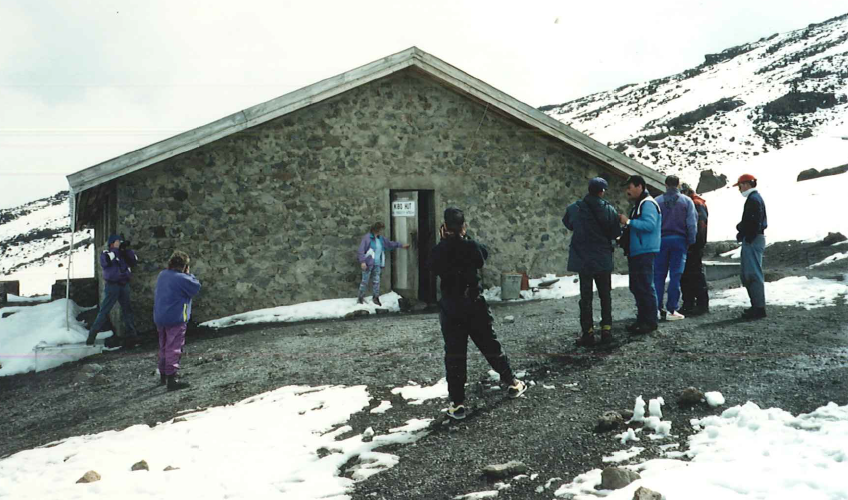
When I went to sleep, the mountain was still clouded over. When I went outside to go to the bathroom at 9:30 PM, I knew that I was going to the top for sure this time. There was not a single cloud in the sky. All I saw was the mountain and hundreds of stars.
This time there were probably close to a hundred people attempting the summit, including my new Swiss friends. I moved up the mountain conservatively this time around, staying behind my porter-guide. The whole way up, I was talking about going to the top: Uhuru Peak.
Right?
My porter-guide would always agree, but in the sort of way that made me suspect there might be a problem later on. For the moment, though, I set that concern aside and focused on the climb. I don’t ever remember seeing so many stars in my life.
At 5:00 AM, we were the first to reach Gillman’s Point, the lower peak at 5680m. The second we got to Gillman’s Point, my porter-guide shouted “The top!” and “Congratulations!”. This caught me by surprise.
I said, “This is not the top. We need to go to Uhuru Peak”.
He replied, “No, this is the top. We can’t go to Uhuru Peak because there is too much snow”. I asked to go by myself, but I received a definite “NO!” to that proposal.
In frustration, I said, “I want to wait for the sunrise,” which is a pretty common thing for people to do at the top of Kilimanjaro. This bought me some time. Within about ten minutes, I had surveyed the situation. From Gillman’s Point, the trail goes into the mountain’s crater and climbs out to Uhuru Peak. There appeared to be a lot of snow in the crater, but I noticed a ridge linking Gillman’s Point to Uhuru Peak. I thought that would be the best way to go, because the weather was perfect (for a change) and probably the least amount of snow would be on the ridge. I decided that I was creating the Zalokar Route: the ridge to Uhuru Peak. I told my porter-guide that I needed to use the restroom, and then I was gone.
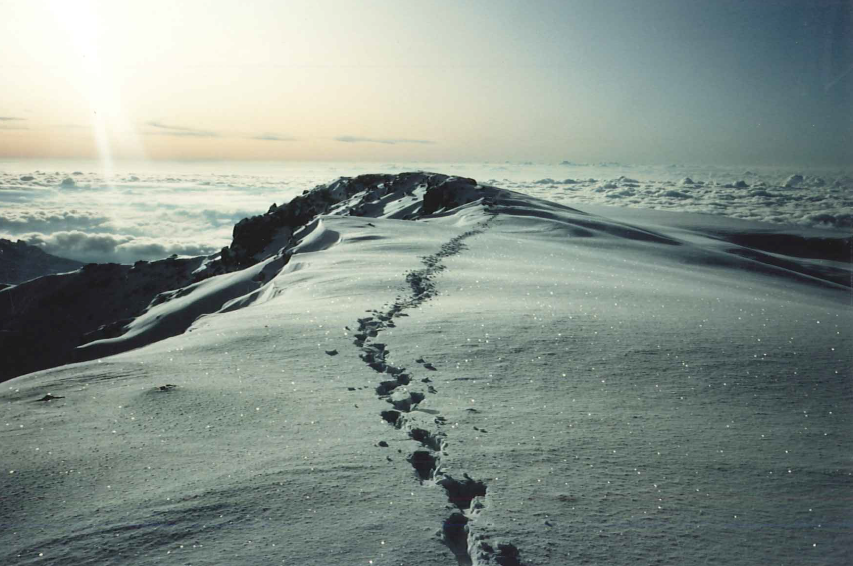
On January 22, 1993, I reached Uhuru Peak at 7:00 AM. There was some post-holing in the snow along the ridge, but it wasn’t too bad. There were no signs that anyone had been there in quite a while. I was so pleased. The summit sign was only barely visible, two feet above the snow. It was a beautiful sight, and the view from the top was incredible, because the sky was so clear.
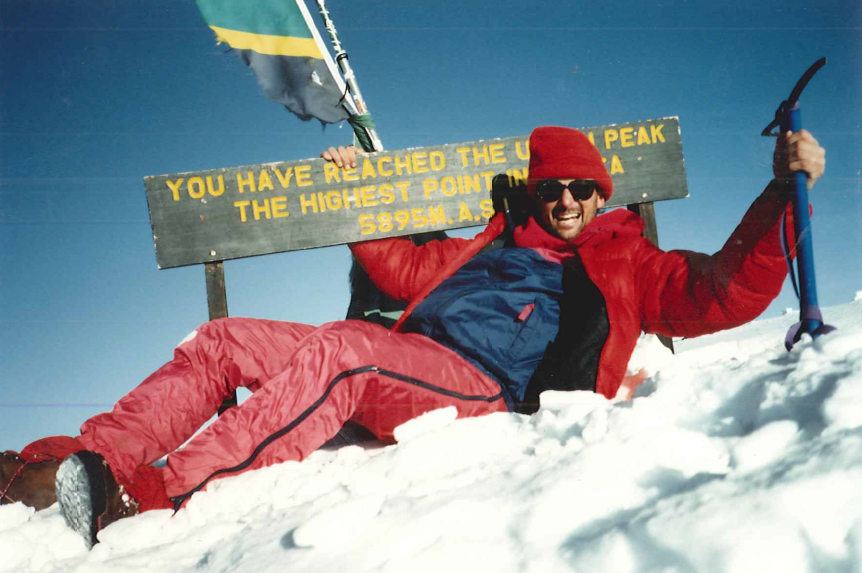
I stayed on top for about 10 minutes and then started back down the ridge. I met my porter-guide about 3/4 of the way down the ridge; he had figured out where I’d gone and had started his way up to meet me. He smiled and congratulated me. I was glad our meeting went that way instead of being confrontational. I gave him a $100 tip then, and he was even happier after that. We got back to Gillman’s Point at 8:00AM and all the Swiss were there. One asked me, “Did you go all the way to Uhuru Peak?” I said, “Yes!” and jumped down the ridge from Gillman’s Point and ran through the snow all the way back to Kibo.
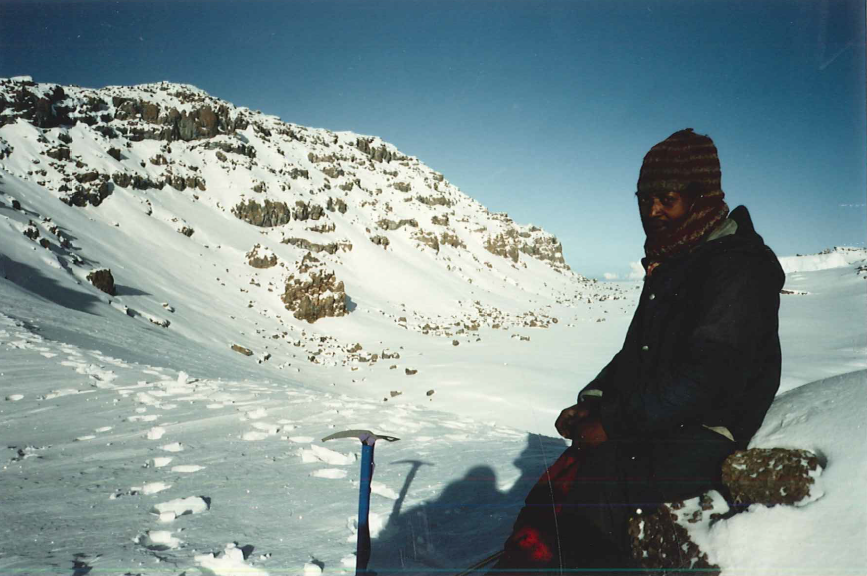
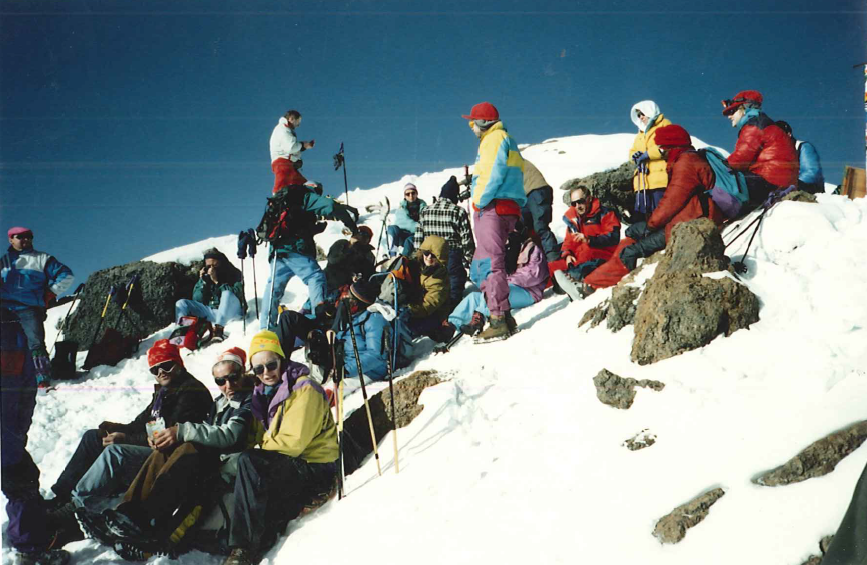
Climbing to the true summit of Kilimanjaro, Uhuru Peak, despite the obstacles I had to overcome (mud, sickness, cold, snow, guide-on-a-gurney, less-than-perfect-equipment, and being told “NO!” in no uncertain terms) actually made the trip more fun, exciting, challenging, and rewarding than if it had been a typical Kilimanjaro summit attempt! The biggest challenge in climbing Kilimanjaro is really the altitude. It is not a technical climb at all. In perfect conditions, it is really just a long hike. When my porter-guide got to Kibo an hour after me, we decided to go all the way out to Marangu Gate—the entrance to the park at 2000m. I was ready to leave the park and sleep in a bed. We arrived at the Horombo Hut at 11:45 AM and had lunch. We passed by the Mandara Hut at 2:00 PM, and then arrived at the gate at 4:15 PM.
Guess who was waiting for us? It was Obre. I wanted to go to the Moshi Hotel about 35 miles away. I desperately wanted to get to the hotel and take a shower. I agreed to pay $30 for the ride. With my ex-guide and his father driving, we left. First, we stopped to pick up the bag I left at the first night’s lodging and then went on to Moshi. Half way there, Obre asked me, If I remembered my promise. I said, “What promise?”. He said, “Your promise of a tip”. I offered him some t-shirts, but he refused them and demanded cash. I explained to him that he didn’t do the job he had been hired for, and that I had payed top dollar for this ride. He insisted again.
Finally, I said, “No, and let’s not talk about it again.” When we arrived at the Moshi Hotel, Obre tried to come in with me, and I suggested that he go home. I checked in, went to my room, and noticed that my door didn’t lock, but I was really tired and I figured it wouldn’t be a problem. When I checked in the hotel had water and electricity, so I started to run a hot bath, since I didn’t have a shower.
Then someone burst into my room. It was Obre.
I reacted without thinking. I ran right at him and put my right hand around this neck. I lifted him off his feet, took him out the door across the hallway, and pinned him to the wall. It all happened in matter of seconds. I snarled, “What the hell do you want?”. He had a hard time speaking with my hand around his throat, but he managed to squeak out, “My t-shirts”. I said, “Fine” and dropped him. I went back into my room and brought him 2 t-shirts. He took them and left without saying another word.
Damn. Now I had to get my things together and get another room with a locking door. I tried to call the front desk but the phone didn’t work. I went to the front desk and asked for a new room—this time with a door that locked. Obre was still there, but he didn’t confront me. I went to my new room and locked the door. Luckily, I had time to fill the bath tub with hot water before the water and electricity went off for the night. I really needed a bath. After that, I went straight to sleep, without even eating dinner.
The next morning, I checked out at 6:30 AM and took a local bus to Arusha. It was a good local experience. I arrived at Arusha at 8:30 AM. I got the word out that I wanted to go on safari with English-speaking tourists. About three hours later, a group called Star Tours contacted me at the hotel bar. Leaving the next morning, they had a five day, four night camping safari. It was with two couples, one Canadian and one English, and I would be the fifth person. It cost $250 and included food and lodging. It went everywhere that I wanted to go: Tarangire, Serengeti and Ngorongoro Crater. The safari was amazing, but I will save that story for another Trip Report.
